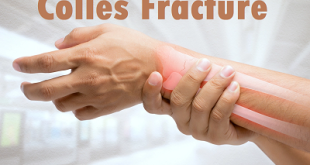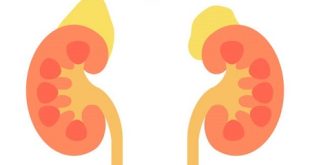Definition of Cleft lip and palates
A “cleft” is a split or a divide. Cleft lips and palates happen before birth. A baby can have a cleft lip, cleft palate, or both. A cleft lip may be on one or both sides of the upper lip. The split may also be in the upper jaw and gum.
A cleft palate is an opening in the roof of the mouth. The front part is the bony hard palate. The back part is the soft palate, made of muscle. A cleft palate can be on one side or both sides of the mouth.
Baby with cleft lip
A child can have a submucous, or hidden, cleft palate. This happens when tissue, called the mucous membrane, covers the cleft. It is the pink tissue that you see in your mouth. The cleft may be hard to see, and you may not know it is there.
Epidemiology
The overall prevalence of orofacial cleft is estimated to be approximately 1 in 700 live births, accounting for nearly one-half of all craniofacial anomalies. As reported by the World Health Organization (WHO), the prevalence at birth of OFC varies worldwide, ranging 3.4–22.9 per 10,000 births for CL/P, and 1.3–25.3 per 10,000 births for CPO. The incidence of cleft palate (CL/P) and cleft palate alone (CPO) can vary greatly between studies. The inclusion criteria, case definition, data sources, and selection bias contribute to the varying incidence estimates.
Prevalence has been found to vary based on ancestry, with the highest incidence rates observed amongst Asian populations (0.82–4.04 per 1000 live births), intermediate rates amongst Caucasians (0.9–2.69 per 1000 live births), and the lowest rates amongst African populations (0.18–1.67 per 1000 live births). Prevalence has also been found to vary further by subgroup, for example, with one study reporting lower rates of Orofacial cleft amongst Far East Asians compared to Filipinos.
Types of Cleft lip
The type of cleft lip and/or palate a child has will determine the kind of care that he or she needs.
- A cleft lip means that there is a gap in the baby’s lip. The cleft may be on one or both sides of the upper lip and may reach all the way to the nose. Often, a baby with a cleft lip may have a gap in the upper gum.
- A cleft palate has a gap in the roof of the mouth that connects to the nose.
- The combination of a cleft lip with a cleft palate is more common than just a cleft lip or just a cleft palate.
Types of Cleft lip
Cleft lip risk factors
There are various factors which increase the risk of the child to develop cleft lip and palate. These include:
Gender: Men are at double risk of developing a cleft lip (with or without cleft palate), and women are at high risk of developing cleft palate without a cleft lip.
Family History: Individuals who have a family history of cleft and palate are at high risk of developing it.
Smoking: The probability of cleft lip and palate increases if the mother smoke during pregnancy.
Alcohol Consumption: Consumption of alcohol during pregnancy increases the risk of developing cleft lip and palate in the child.
Medications: Certain medication like steroids and anti-seizure medication, if taken during pregnancy increases the risk of cleft lip and palate in children.
Diabetes: Children of women who have been diagnosed with diabetes before the pregnancy have a high risk of cleft lip and palate.
Obesity: Children born to obese women have a high risk of having a cleft lip and palate.
Causes of Cleft lip
It happens when the structures that form the upper lip or palate fail to join together when a baby is developing in the womb.
The exact reason why this doesn’t happen in some babies is often unclear. It’s very unlikely to have been the result of anything you did or didn’t do during pregnancy.
In a few cases, cleft lip and palate is associated with:
- The genes a child inherits from their parents (although most cases are a one-off)
- Smoking during pregnancy or drinking alcohol during pregnancy
- Obesity during pregnancy
- A lack of folic acid during pregnancy
- Taking certain medicines in early pregnancy, such as some anti-seizure medications and steroid tablets
In some cases, a cleft lip or palate can occur as part of a condition that causes a wider range of birth defects, such as 22q11 deletion syndrome (sometimes known as DiGeorge or velocardiofacial syndrome) and Pierre Robin sequence.
Cleft lip symptoms
Symptoms to watch for that would indicate a submucous cleft are as follows:
- Nasally sounding speech due to air exiting through the nose
- Feeding and swallowing problems, including food and liquids entering the nose
- Ear infections caused by atypical muscle attachments
Speech is affected by babies and children in multiple ways. Babies may be delayed in starting to babble while having a limited consonant range while babbling. They might be delayed in uttering their first words while learning additional words at a slower pace. As children age, they might be prone to articulation errors and a delay in expressive language abilities. They may have soft voice syndrome.
Feeding challenges occur in babies as they can’t separate the nasal and oral cavities. This prevents them from sucking while affecting their ability to express breast milk from the nipple. Inadequate nutrition may lead to poor weight gain. They might take in too much air and experience fatigue as a result of working so hard to feed.
In addition to ear infections, conductive hearing loss is possible. Over 90 percent of children with a cleft palate will suffer from middle ear fluid buildup. Hearing loss may also cause socialization issues in older children due to an inability to keep up with conversations.
Complications
Children with cleft lip with or without cleft palate face a variety of challenges, depending on the type and severity of the cleft.
Difficulty feeding: One of the most immediate concerns after birth is feeding. While most babies with cleft lip can breast-feed, a cleft palate may make sucking difficult.
Ear infections and hearing loss: Babies with cleft palate are especially at risk of developing middle ear fluid and hearing loss.
Dental problems: If the cleft extends through the upper gum, tooth development may be affected.
Speech difficulties: Because the palate is used in forming sounds, the development of normal speech can be affected by a cleft palate. Speech may sound too nasal.
Challenges of coping with a medical condition: Children with clefts may face social, emotional and behavioral problems due to differences in appearance and the stress of intensive medical care.
How to diagnosis?
- There are no special tests required to diagnose, as the cleft palate is noticed at birth. But in order to determine the condition before birth, doctors may conduct a prenatal ultrasound at the beginning of the 13th week of pregnancy.
- If a cleft is diagnosed, the doctor may ask the mother to undergo a test where a sample of the amniotic fluid from the uterus is taken. This test will determine if the fetus has inherited genetic syndrome.
Ultrasound images of cleft lip
Treatment of Cleft lip
The cleft lip and palate is treated with an aim to enhance the physical appearance and to improve the eating, speaking and hearing ability of the individual. The following approaches are used for treating cleft lip and palate:
Feeding Support: During breastfeeding, infants with cleft lip and palate have to face many difficulties. So, the mother has to feed in a certain specific position or use a specially designed bottle for feeding.
Hearing Support: Infants born with cleft lip and palate have a high probability of dull hearing. The dull hearing is due to the presence of glue-like solution in the middle ear rather than air. If the infant has a dull hearing, tiny tubes are used to remove the fluid or hearing aids are fitted to improve the hearing ability.
Dental Treatment: The parents or the caretakers are taught about dental hygiene, and if the child does not develop teeth properly, the physician will recommend braces.
Speech and Language Therapy: Infants born with cleft palate face difficulties in speaking. A speech and language therapist monitors the development of language and speech during the entire childhood and gives suggestions accordingly.
Surgeries are done to correct the cleft lip and palate. The surgery to fix the cleft lip is done within 12 months after birth. The surgery to repair cleft palate is done within 18 months after birth. Follow-up surgeries are done in childhood and adolescence if required.
Surgery
The treatment called nasoalveolar molding (NAM) aims to prepare the infant for future surgery. Surgery to close the cleft lip may take place within 3 to 6 months of birth. An infant will generally receive treatment for a cleft palate between the ages of 9 and 18 months. This should enable the child to speak and eat without further difficulties.
Before and after surgery of cleft lip
Corrective surgery can help realign the jaw. In cases where a child needs surgery to correct the jaw, some doctors prefer to wait until the child reaches the ages of 10 to 12 years before performing the surgery. Waiting for all adult teeth to develop before the surgery may prevent the need for corrective surgeries further down the line.
The prognosis for a cleft lip and cleft palate
While the effective treatment for cleft lip and cleft palate requires many surgical procedures, speech therapy, and consultation with many medical specialists, it should be anticipated that an excellent outcome regarding appearance and function can be achieved. In order to maximize the medical management as well as coordination with multiple health care professionals and parents, a cleft palate team is generally the preferred approach to coordination of care. Such teams are commonly found at pediatric teaching hospitals in major cities. The members of the medical team will commonly consist of
- Plastic surgeon
- Otolaryngologist (ear, nose and throat doctor [ENT])
- Oral surgeon
- Prosthodontist (makes dental appliances)
- Dentist and orthodontist
- Speech pathologist/therapist
- Audiologist (hearing specialist)
- Social worker/psychologist
- Geneticist
- Nurse coordinator
Prevention
The exact cause of these birth defects is unknown. So, you cannot prevent or avoid them. But there are steps you can take to lower your risk of having a baby with a birth defect. These include:
- Taking folic acid before and during pregnancy.
- Avoiding tobacco, drugs, and alcohol during pregnancy.
- Getting to a healthy weight before pregnancy and not gaining too much weight during pregnancy.
- Getting vaccinations and protecting you from infections.
Talk to your doctor about these and other ways to help reduce the chance of birth defects.
 Diseases Treatments Dictionary This is complete solution to read all diseases treatments Which covers Prevention, Causes, Symptoms, Medical Terms, Drugs, Prescription, Natural Remedies with cures and Treatments. Most of the common diseases were listed in names, split with categories.
Diseases Treatments Dictionary This is complete solution to read all diseases treatments Which covers Prevention, Causes, Symptoms, Medical Terms, Drugs, Prescription, Natural Remedies with cures and Treatments. Most of the common diseases were listed in names, split with categories.








cleft lip some believe it is time of eclipse that take place in Mother womb due to some work done
Apparently my son has a cleft palate, and we’re not sure what to do. It makes sense that we’ll want to find a good professional to help us out with this! They would be able to ensure that we handle things properly.